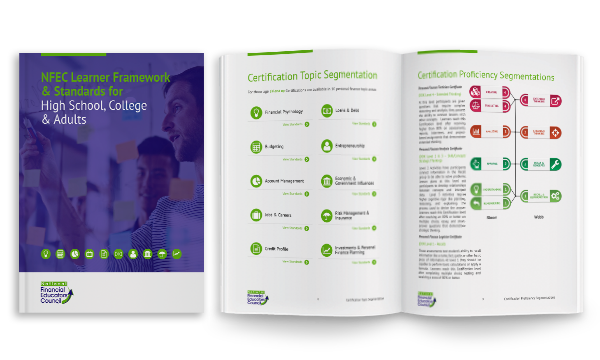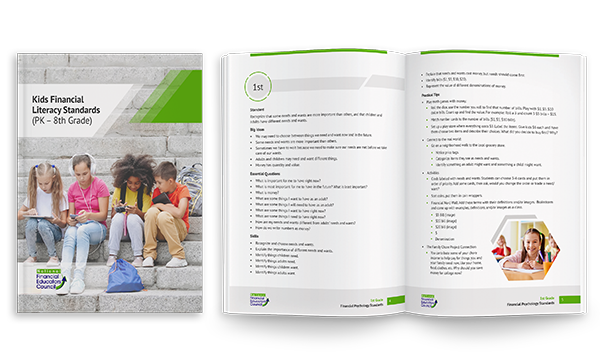Georgia Financial Literacy Standards
The Peach State fares better than average for financial education criteria in its schools, according to the National Report Card Champlain College compiles every other year. Georgia’s educational targets stipulate that high school students must take a half-year course in economics to graduate; the course has 22 standards, six of which are related to personal finance. For this reason, Champlain awarded Georgia a “B” grade on its 2015 Report Card.
Based on the economics course requirements, Champlain estimated that Georgia students receive about 16 hours of instruction in money management, on average. The Peach State also requires end-of-course assessments on all their core high school courses, including economics; and Champlain confirmed that, on the economics course test, about 27% of the questions measure personal finance benchmarks. It’s unclear, however, whether the assessment provides Georgia with an accurate, meaningful picture of the quality and quantity of financial education being delivered.
According to reporting by the Council for Economic Education in 2015, Georgia includes financial education in its K-12 standards, which each district must implement; high school-level coursework in money management must be offered and taken (in Georgia, the class is incorporated into an economics course). Georgia also has standardized testing in place to measure financial education outcomes.
National Standards for Financial Education
Financial Literacy Standards for Older Youth & Adults (High School through Adults)
Although there is no direct mandate by the California State Board of Education, it is recommended that national standards be implemented. Financial education is a unique subject; all participants have developed financial habits and relationships with money before instruction begins.
National standards are those that have been proven in empirical and theoretical research to produce the highest improvements in participant test scores.

Financial Literacy Standards for Kids (Kids PK through 8th Grade)
In collaboration with education leader Heidi Jacobs, the NFEC created these financial literacy standards to define learning goals and educational targets for optimal child financial education. Guided by strong pedagogical theory, the standards ensure that instructional targets are age- and developmentally-appropriate and that lessons can be effectively scaffolded. Standards represent five sections based on topic areas in the NFEC curriculum.

Standards for Financial Education Instructors
The NFEC teamed with the well-known Danielson Group to develop the first and only national standards for financial educators – The Framework for Teaching Personal Finance – to define optimal educator skill sets and performance levels. The framework also identifies the financial educator responsibilities empirically proven to produce highest gains in participant test scores. This framework is used in all 50 states, including California.

